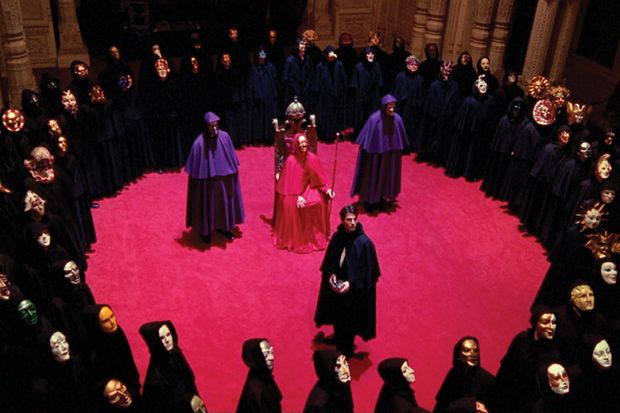The films of Stanley Kubrick, who died 20 years ago in 1999, have enjoyed much critical reappraisal of late. This is especially true of his final film, Eyes Wide Shut, now celebrating its 20th anniversary. This has been accompanied by a scholarly outpouring, much (although not all) of it prompted by the opening-up of his personal papers at the Stanley Kubrick Archive at the University of the Arts London. Academics have been poring over these documents in search of answers about the meaning of Kubrick’s films, as well as about how he made them. Rejecting this archival turn in Kubrick studies, this book by an emerging scholar, Maarten Coëgnarts, takes a completely new approach to the films.
This approach is known as cognitivist film criticism, as opposed to the film-as-text approach with its own “language”, “syntax” and “grammar”. Thus, Coëgnarts explores viewer perception, comprehension and emotion. To put it in his own words, “our goal [is] to demonstrate how the situational meanings of Kubrick’s films are communicated visually to the viewer”. To this end, he identifies some of the central concepts that define the meaning of Kubrick’s films in order to answer the question of how the visuals convey complex concepts and abstractions without the traditional reliance on words. Furthermore, he explores how Kubrick’s use of pure instrumental music expresses meaning.
The book argues that Kubrick is a “genuine conceptual artist”, a film-maker who “perhaps more than any other director, uses all the non-verbal resources of filmmaking in such a controlled and dense manner as to elicit the bodily structures necessary to achieve a level of conceptual understanding”.
While cognitive film theory predates this study, Film as Embodied Art is perhaps the first book to apply it systematically to Kubrick’s films. The reader learns much about how Kubrick shot his films and what motivated his choice of shots (for example, Steadicam, hand-held, zooms and so on). Such technical detail, bolstered by quotation from the director himself, is valuable in a field that is too often dominated by textual studies that tend to overlook the actual circumstances of production.
At the same time, Coëgnarts is careful to not be purely visual (another tendency that mars film studies) but to give consideration to the aural. Pointing out that the function of film music is not purely to enhance the visual images, he observes that Kubrick “carefully selects the music on the basis of whether or not our embodying understanding of it mirrors our embodied understanding of the inner psychological states of the characters”. The text is richly illustrated, and the analysis is backed up by useful a glossary, discography, filmography and bibliography.
Film as Embodied Art works in two ways. It uses cognitive film theory to shine a light on the work of Stanley Kubrick, and at the same time it uses the director to illustrate the theory. It is certainly a contribution to the growth of what may be called Kubrick studies, significantly adapting and enhancing our approaches to his work.
Nathan Abrams is professor in film at Bangor University and the author of Stanley Kubrick: New York Jewish Intellectual (2018) and, with Robert Kolker, Eyes Wide Shut: Stanley Kubrick and the Making of His Final Film (2019).
Film as Embodied Art: Bodily Meaning in the Cinema of Stanley Kubrick
By Maarten Coëgnarts
Academic Studies Press, 264pp, £107.00 and £37.50
ISBN 9781618118363 and 9781644691120
Published 30 October 2019
